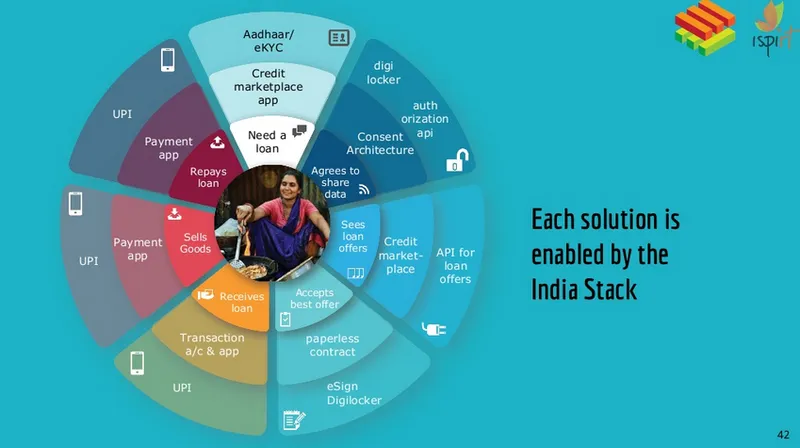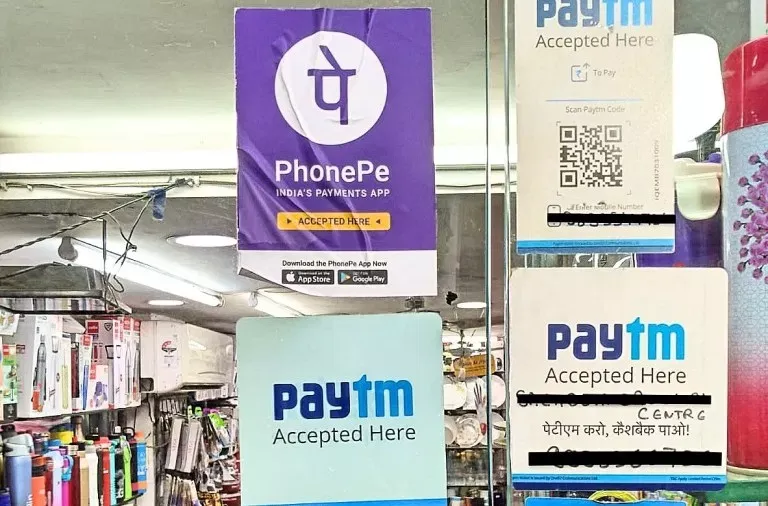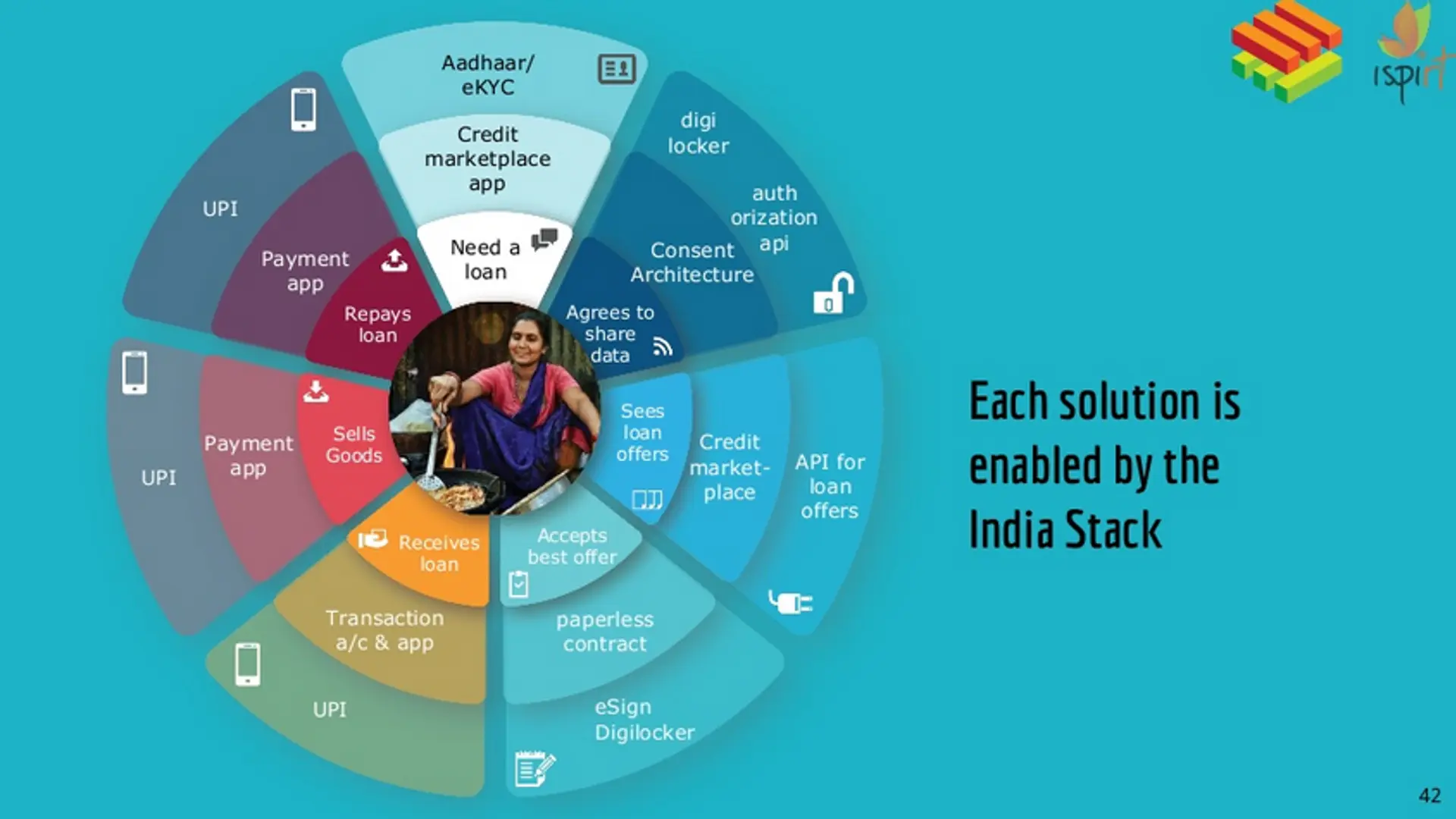The promise of IndiaStack, and how the world is watching
IndiaStack is a collection of APIs targeted at entrepreneurs who want to build products and services for all of India.
Platforms and infrastructure movements are the key ingredients for a technological revolution. Sometimes, they become the revolution themselves. India stands at a moment where it is executing a series of infrastructure moves that can change the future for the better, without much fanfare and popular acclaim.
The movement is IndiaStack, a collection of software utilities available as an API that helps institutions in India build a digital experience for the billion-plus people who inhabit it. IndiaStack is the platform that promises to easily scale products and services that are in need of monetary and identity transactions. A modern transaction and settlement infra for a modern India.

In the process of providing such an infrastructure, what IndiaStack essentially does is erase and remove boundaries that marred modern experiences for many Indians. The idea of a single market and the frictionless happening of trade and commerce in different parts of the country was and is in our constitutional ethos.
IndiaStack and single market idea for India
If anything, IndiaStack will help India become a cohesive, single market in the near future. In a vast, pluralistic country like ours technological and economic unity can be a challenge. It is much harder to assemble the various stakeholders of our modern economy—small businessmen, accountants, farmers, the regular salaried consumer, and myriad others—under a single philosophy of shared transaction standard with or without their explicit knowledge.
What was and still is needed is the design of seamless experiences that serve the daily and urgent needs of a wide variety of economic actors that help everyone speak the same digital language. India needs various pieces of infrastructure that connect and unify a divided market so that every actor has more degrees of freedom in the ecosystem. The difficulty of connecting different markets of India is almost comparable to connecting markets of different countries. Nandan Nilekani, in his book, Imagining India: Ideas For The New Century, writes about the history and mechanics of transitioning India into a single market and how the political economy of India was not a natural consumer to the idea.
India has not lent itself to reforms easily: take any economic endeavour in India, be it regulation of taxes, increasing agricultural productivity, or streamlining national transportation networks, the polity, and the economic machinery. Nilekani quotes Dr Nicholas Stern saying, “At the most basic level, connecting India’s villages to the Indian market is as big a challenge as connecting to the global market - India is a huge country, massive in its opportunities.”
IndiaStack and financial deepening in India
Joseph Schumpeter around 1911 stressed on the importance of the financial sector and its impact on economic growth. After many years, Robert King studying the question said, “We find that higher levels of financial development are positively associated with faster rates of economic growth, physical capital accumulation, and economic efficiency improvements both before and after controlling for numerous country and policy characteristics.”

A platform like IndiaStack added with the ability to personalise services will help Indians to preserve their cultural identity and pluralism rather than diminish it. IndiaStack evangelised properly can lead to financial deepening in the Indian market. IndiaStack can reduce the costs to deliver financial products and onboard customers hence providing access to a whole new range of customers to the financial markets.
Some of our poorest are served by microfinance institutions that charge some of the highest interest rates in the whole market. There can be assumptions and guesses as to what those high interest rates indicate, but we can choose to find ways to make paths for the poor to reach the mainstream credit institutions where interest rates are much more manageable.
Critical pieces such as data consent mechanism, KYC, and payments are all present. The IndiaStack promises a future where through appropriate data collection practices, the poor and their financial needs will become more visible.
The tech stack
IndiaStack is a collection of APIs targeted at entrepreneurs who want to build products and services for all of India. Let us unroll some of the API services:
- Aadhaar - API to ID the consumer.
- eKYC - Tools to digitise the whole KYC process.
- UPI - Platform for micropayments directly between banks.
- Digilocker - Storage and retrieval of digital documents.
- eSign - Sign documents electronically.
When you look at the wide arrays of tools provided by IndiaStack one notices the amount of unbundling of services that have taken place. These tools can be layered with various other technologies or bundled together to create value for different consumers. The team at IndiaStack compare this family of services with the TCP/IP protocol that connects many mobile and device applications with the physical layer of the internet. Seen through this angle, IndiaStack can be seen as a connector of various 21st-century technology enablers to the vast masses of India whose existence is currently only represented by bank accounts, phone numbers, and their identity.
This layer enables service delivery, which hitherto had never been possible on such a scale and with this amount of transparency. This kind of experimentation and ambition has also been taken notice by many world organisations. There is always the question whether this can be replicated easily, but the main aim of such an attempt should be not just to transfer the core technology and ideological principles but also add local flavours to build parallel kind of platforms in other countries.
And the world is taking notes…
The platform gives nearly billions of Indians an identity, and allows financial institutions to compete to loan them money. The initial promise and surrounding optimism of financial deepening have many reasons but the chief among them is the design of the stack that lends itself to innovation and contributions. The beauty of the design is that it is a disruption within regulation; a public infrastructure built for private markets, it is a public good that can benefit millions and millions of private citizens.
A recent paper by Bank of International Settlements said, “In spite of (these) caveats, aspects of the Indian approach, not least the promotion of digital platform interoperability, would appear ripe for study, and possibly adaptation, by developing and advanced economies alike. ”
The two key processes that are to be watched as this huge experiment unfolds are:
1. Inviting the underserved and making the formal financial system of the country accessible to them.
2. Keeping them engaged and making sure they don’t leave the formal ecosystem.
For the designs and ambitions of IndiaStack to take root in different economies, there are still concerns that need to be addressed. Those concerns lie in the realms of privacy, third party participation, mobile penetration, etc. But despite all the above issues, the obvious success and promise of IndiaStack is hard to ignore.
(Edited by Evelyn Ratnakumar)
(Disclaimer: The views and opinions expressed in this article are those of the author and do not necessarily reflect the views of YourStory.)



![[YS Exclusive] Nandan Nilekani on how Aadhaar, UPI, account aggregator can be India’s big contributions to the world](https://images.yourstory.com/cs/2/01f48b20d5e911e899be731e1ddbc52d/WhatsAppImage20190919at5156889473663735?fm=png&auto=format&h=100&w=100&crop=entropy&fit=crop)




